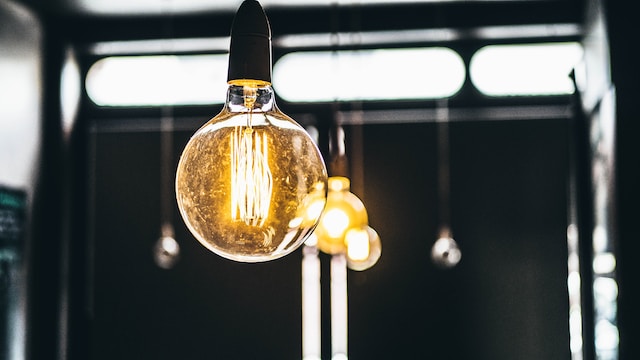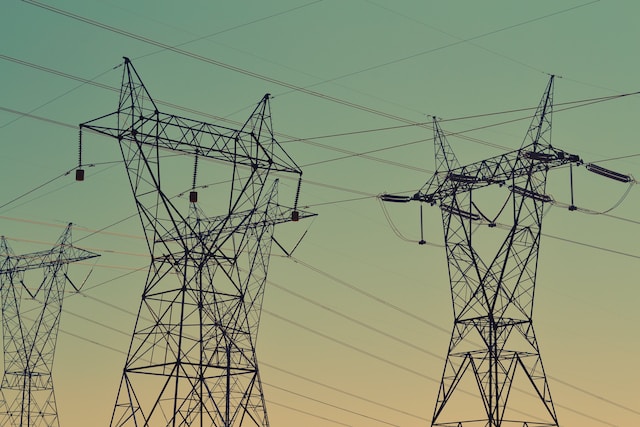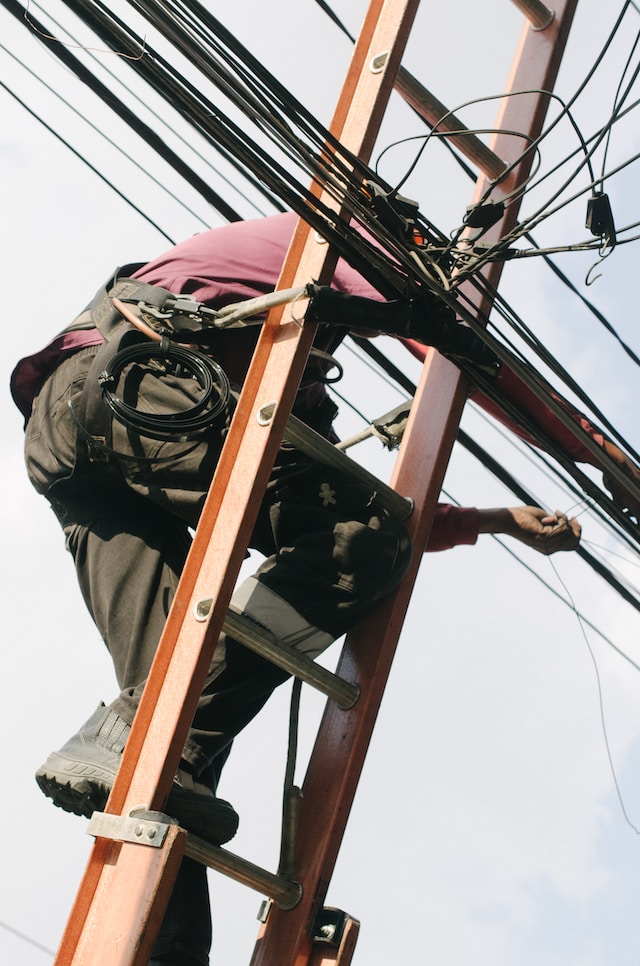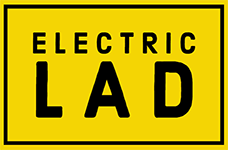
Electricity is truly a wonder of our modern world. It powers our homes, our technology, and even our entertainment. But what is it exactly?
At its core, electricity is a fundamental force of nature that involves the flow of electrons through a conductor. These electrons behave like tiny, negatively charged particles that move from one atom to another in a process known as electrical current.
But where does this flow of electricity come from? The answer lies in the atoms themselves. Atoms are made up of protons, neutrons, and electrons. Protons have a positive charge, neutrons have no charge, and electrons have a negative charge. When an atom loses or gains an electron, it becomes either positively or negatively charged. These charged atoms, or ions, are what generate power.
Electricity can be created in many different ways. One of the most common methods is by using generators, which convert other forms of energy, such as mechanical or chemical energy, into electrical energy. Wind turbines, hydropower plants, and even nuclear power plants all use generators to produce power.
But just because electricity is a part of our everyday lives doesn’t mean it’s without risks. Electrical shocks can be dangerous, and electrical fires can be deadly. It’s important to use caution and follow safety guidelines when working with electricity or electrical appliances.
Historical Development of Electricity
The discovery and development of electricity is a fascinating journey through time. From the ancient Greeks’ understanding of static electricity to the groundbreaking experiments of scientists like Benjamin Franklin and Alessandro Volta, each discovery and invention pushed humanity further into the age of electricity.
Our understanding of electricity can be traced back to ancient times. The Greeks were among the first to observe the phenomenon of static power. As far back as the 6th century BCE, Thales of Miletus experimented with rubbing amber against various materials to generate a static charge. He discovered that amber, when rubbed with cloth, had the power to attract small objects like feathers.
Benjamin Franklin and the Kite Experiment
Fast forward to the 18th century, where electricity began to be studied in a more scientific manner. Benjamin Franklin, an American polymath and one of the Founding Fathers of the United States, famously conducted his kite experiment in 1752.

In an attempt to prove that lightning was a form of electricity, Franklin flew a kite with a metal key attached to it during a thunderstorm. When the key became charged with electricity, Franklin knew that lightning and static electricity were one and the same.
Alessandro Volta and the Birth of Batteries
Another significant milestone in the historical development of electricity was the invention of the battery by Italian scientist Alessandro Volta in 1800. Building upon the work of his predecessors, Volta created the voltaic pile—a series of alternating zinc and copper discs separated by pieces of cardboard soaked in saltwater. This groundbreaking invention provided the world with a continuous source of electric current.
Thomas Edison and the Invention of the Light Bulb
Enter the 19th century, the era of the Industrial Revolution. Thomas Edison, an American inventor and businessman, spearheaded the development of practical and commercially viable electric lighting. In 1879, Edison successfully created a long-lasting incandescent light bulb, revolutionizing the way we illuminate our lives.
Nikola Tesla and Alternating Current
While Edison focused on direct current (DC) systems, Serbian-American inventor Nikola Tesla championed the use of alternating current (AC). Tesla’s inventions and advancements in AC power transmission and distribution laid the foundation for the modern electric power industry. His work in the late 19th and early 20th centuries led to the construction of the first hydroelectric power plants, making electricity more accessible to the general public.
Applications of Electricity
Electricity has become an indispensable part of our lives, powering a vast array of devices and systems that have transformed the way we live and work. From our daily routines to industries, electricity fuels progress and innovation in numerous ways. Let’s explore some of the most significant applications of electricity:
Powering our Homes:

In our homes, electricity provides the energy needed for lighting, heating, and cooling. It brings life to our appliances, allowing us to cook meals, wash clothes, and keep our food fresh. Without power, our homes would be devoid of the comforts and conveniences we often take for granted.
Revolutionizing Communication:
Electricity is the backbone of modern communication systems, enabling us to connect with people around the world in an instant. From smartphones and computers to televisions and radios, electronic devices rely on electrical power to transmit and receive signals, making near-instantaneous communication possible.
Driving Transportation:
Electrical energy is revolutionizing the transportation industry, offering a sustainable alternative to fossil fuels. Electric cars and trains are becoming increasingly popular, thanks to their decreased environmental impact and lower operating costs. The electrification of transportation is paving the way for a greener future.
Advancing Medicine:
Electricity plays a crucial role in the field of medicine, enabling life-saving technologies and treatments. From powering medical equipment and machinery to facilitating the transmission of vital information, electricity is at the forefront of diagnostic procedures, surgical interventions, and therapeutic applications.
Illuminating the World:
Electricity’s ability to create light has transformed the world, making it safer and more vibrant. Streetlights illuminate our paths at night, enhancing security and enabling cities to thrive 24/7. Additionally, electricity powers the dazzling lights of stadiums, theaters, and landmarks, transforming them into captivating spectacles.
Boosting Manufacturing and Industry:
Electricity is the lifeblood of modern manufacturing processes. It powers assembly lines, machinery, and robotics, increasing efficiency and productivity across industries. From automobile factories to tech giants, electricity enables mass production and technological advancements that shape our modern world.
Enabling Entertainment:
Without electricity, our entertainment options would be severely limited. From televisions and video game consoles to music players and streaming platforms, electricity brings a world of entertainment into our lives. The magic of cinema, the thrill of live performances, and the immersion of virtual reality all rely on the power of electricity.
Supporting Renewable Energy:
Electricity also plays a vital role in harnessing renewable energy sources such as solar, wind, and hydroelectric power. These sources generate electricity by converting natural elements into usable energy, reducing our dependence on non-renewable resources and mitigating the impact of climate change.
Electrical Safety and Conservation
Safety should always be a top priority when it comes to working with electricity or using electrical appliances. Here are some guidelines to ensure your safety and the conservation of this valuable resource:
Inspect and Maintain Electrical Equipment: Regularly inspect your electrical equipment to identify any signs of wear, damage, or frayed cords. Address any issues immediately and replace faulty equipment to avoid potential hazards.
Use Ground Fault Circuit Interrupters (GFCIs): GFCIs are designed to protect you from electrical shocks by monitoring the flow of electricity. Install GFCIs in areas where water is present, such as bathrooms, kitchens, and outdoor outlets.
Avoid Overloading Outlets: Overloading outlets can lead to overheating and potential electrical fires. Be mindful of the amount of power you are drawing from an outlet and use power strips or extension cords with built-in overload protection when needed.
Properly Store and Dispose of Batteries: Batteries can be a fire hazard if not handled properly. Store batteries in a cool, dry place and follow the manufacturer’s instructions for disposal. Avoid mixing different types of batteries or storing them loose in a drawer, as this can lead to short circuits.

Unplug Unused Appliances: Many appliances continue to draw electricity even when turned off. Unplug unused appliances or use power strips with switches to completely disconnect the power source, saving energy and reducing the risk of electrical malfunctions.
Practice Caution with Electrical Cords: Avoid running electrical cords under rugs or heavy furniture, as this can cause them to overheat. Make sure cords are in good condition and do not pull or tug on them when unplugging from an outlet.
Educate Yourself on Electrical Fire Safety: In case of an electrical fire, knowing how to respond can be lifesaving. Familiarize yourself with fire safety protocols, such as using a Class C fire extinguisher designed specifically for electrical fires and knowing when to evacuate and call emergency services.
Remember, electricity is a precious resource, and conserving it not only protects the environment but also reduces energy costs. By implementing energy-saving measures, such as using energy-efficient light bulbs, turning off lights when not in use, and adjusting thermostat settings, you can make a significant contribution to conservation efforts.
Electricity is a phenomenon that has shaped our world in unimaginable ways. From ancient Greek experiments with static electricity to Benjamin Franklin’s kite experiment, from Alessandro Volta’s invention of the battery to Thomas Edison’s creation of the light bulb, each discovery and invention has propelled us further into the age of electricity. Today, electricity powers our homes, drives our transportation, advances medicine, and illuminates our world. It enables communication, boosts manufacturing, and provides endless entertainment. Electricity truly is a marvel of our modern world, and its potential for future discoveries and advancements is limitless.
